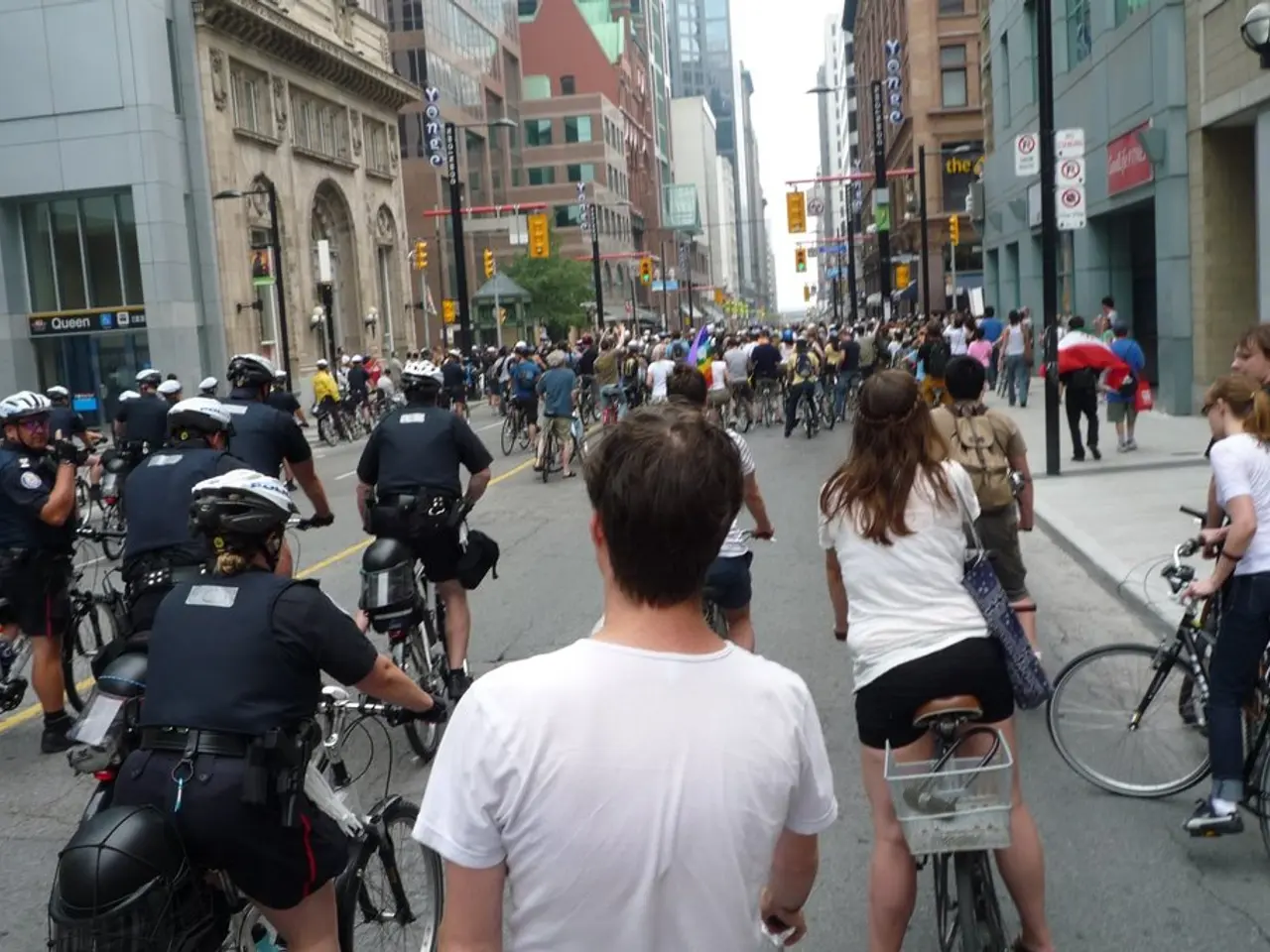Melbourne presents groundbreaking bike strategy for urban cyclists
In a bid to reduce congestion and promote active travel, the RACV (Royal Automobile Club of Victoria) is encouraging local councils to reconsider their use of road space and adopt pop-up bike lanes and wider footpaths.
According to the RACV's research, more people are interested in cycling but are deterred by the fear of riding in traffic. Separated bike lanes, such as those implemented in service lanes like Queens Parade in Melbourne, have proven to improve safety and accessibility for cyclists, leading to increased cycling and reduced local street congestion.
Melbourne's initiatives, including the Pop-Up Bike Lane projects, have shown that protected and separated bike lanes can significantly increase rider numbers. For instance, some cases have seen a 200-300% increase in bike usage. These lanes help to avoid conflicts between cyclists and parked cars, preventing "dooring" crashes, and accommodate more pedestrians comfortably and safely on wider footpaths.
Darebin, a suburb in Melbourne, and Port Phillip, another Melbourne area, have also followed suit, implementing safe cycling routes and wider footpaths. However, there are calls for reinstatement and expansion of pop-up lanes in Darebin to ensure safe separated bike lanes on major routes.
The City of Melbourne plans to remove hundreds of car spaces to make way for 40 kilometers of cycling lanes over the next two years. The first areas to be upgraded will be Exhibition Street between Flinders Street to Bourke Street and Rathdowne Street between Victoria Street to Faraday Street.
The popularity of cycling and walking has exploded during the COVID-19 lockdown, and the mayor of the City of Melbourne, Sally Capp, has acknowledged this trend. The next upgrades are expected to be on William Street from Dudley Street to Flinders Street, Abbotsford Street from Flemington Road to Queensberry Street, and Swanston Street from Grattan Street to Cemetery Road.
The RACV believes that the approach of creating safe spaces for walking, jogging, and cycling, as seen in cities like Vancouver, Milan, Berlin, and Auckland, could be replicated across greater Melbourne. The RACV's senior planner, Stuart Outhred, suggests that the pop-up cycling paths are a low-risk, low-cost approach to allow people to walk or ride bikes by reallocating road space.
In a similar vein, the City of Sydney is creating more than 10 kilometers of pop-up bike lanes to cope with commuters when COVID-19 restrictions ease. This move is aimed at addressing the challenge of the return-to-work commute in Melbourne. The bike lanes will be built using plastics, rubber, and recycled materials that can be installed quickly.
The RACV advocates for other local municipalities to follow the City of Melbourne's lead in creating pop-up bike lanes and wider footpaths. Giving people safe options to ride bikes or walk means that they don't need to jump in cars and add to congestion. The infrastructure installed will be functional for years to come and can be progressively replaced with fixed lanes over time as required.
Without such measures, congestion on Melbourne's roads could rebound to worse than pre-pandemic conditions as people return to work but are either unwilling or unable to access public transport due to social-distancing restrictions. The RACV welcomes the City of Melbourne's plans to temporarily reallocate road space for increased pedestrian and cycling activity.
- The expansion of pop-up bike lanes in Darebin, as suggested, could encourage more locals to adopt cycling as a lifestyle, reducing the reliance on personal vehicles and subsequently, traffic congestion in the home-and-garden sector.
- In the finance industry, investments in public-transit infrastructure, such as widened footpaths and pop-up bike lanes, would not only promote active travel but also potentially yield long-term returns, considering the growing emphasis on sustainable transportation.
- As more people opt for cycling and walking post-pandemic, the need for outdoor spaces like parks and gardens within residential areas becomes increasingly important, as they can serve as part of the overall lifestyle for families and contribute to a healthier overall community, both financially and socially.




